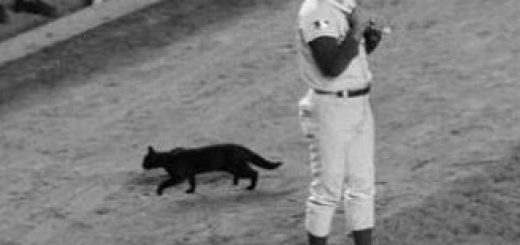History of baseball in Ukraine
Baseball is a bat-and-ball game which is played between two teams. They consist of nine players in each, who take turns batting and fielding.
The batting team attempts to score runs by hitting a ball that is thrown by the pitcher with a bat swung by the batter, then running counter-clockwise around a series of four bases: first, second, third, and home plate. A run is scored when a player advances around the bases and returns to home plate.
Players on the batting team take turns hitting against the pitcher of the fielding team, which tries to prevent runs by getting hitters out in any of several ways. A player on the batting team who reaches a base safely can later attempt to advance to subsequent bases during teammates’ turns batting, such as on a hit or by other means. The teams switch between batting and fielding whenever the fielding team records three outs. One turn batting for both teams, beginning with the visiting team, constitutes an inning. A game is composed of nine innings, and the team with the greater number of runs at the end of the game wins.
Baseball evolved from older bat-and-ball games already being played in England by the mid-18th century. This game was brought by immigrants to North America, where the modern version developed. By the late 19th century, baseball was widely recognized as the national sport of the United States. Baseball is now popular in North America and parts of Central and South America, the Caribbean, and East Asia. Meanwhile Europe also plays baseball. There are about 40 European baseball federations among which there is a Ukrainian one as well.
With the exception of Russia, no other former Soviet Republic has had as much baseball success as the Ukraine. From the start, Russia and the Ukraine showed the most baseball skill in the former USSR. In June 1987, the Tass News Agency reported that Moscow’s Aviation Institute defeated the Ukraine’s Kiev Spartak club to win the first Soviet national baseball tournament. The following summer, Sports Illustrated writer Steve Wulf traveled to Moscow and had this to say about the Ukrainian team competing in a national tournament:
“Most of the players on the team representing the Ukraine are from the capital city of Kiev. They have the best baseball uniforms in all of the U.S.S.R., red with nuclear blue trim and the leaf of the beriozka (birch) tree, native to the Ukraine, over the heart. The Ukrainians have become one of the better teams in the Soviet Union with the help of Cuban, Nicaraguan and Ukrainian-American advisers and under the whip of their blustery coach, Victor Pyanikh, known affectionately to his players as Attila the Hun. He looks a bit like San Diego Padres manager Jack McKeon”.
Kiev was a key spot when touring foreigners came to the Ukraine. When a squad from the Eastern League, a Double-A minor league circuit, toured the Soviet Union in fall 1989, Kiev was its first stop. That sort of interest helped spur the development of a permanent field in 1990. “Because there is no grass, what should be the infield diamond blends into the outfield,” wrote Glenn Nelson in a 1990 Seattle Times article about the Kiev facility named after the mercurial Ukrainian coach Victor Pyanikh. “The field has such unusual mercurial Ukrainian coach Victor Pyanikh. He held has such unusual touches – by Soviet standards, that is – as an outfield fence, foul poles and backstop. Pyanikh Field also features the first pitching mound ever used in a Soviet tournament.”
The collapse of the Soviet Union – and Ukraine’s independence in 1991 – offered many newfound freedoms, but for those in the Soviet baseball world the change was not for the better. Financing of this field was not at the appropriate level. Nevertheless Ukrainian baseball plyers have not been stopping the game. They train hard and take part in different local and international competitions. Not long ago some investors and sponsors have become interested in the Ukrainian baseball and start to support it financially. It seems that Ukrainian baseball has been acquiring a new lease of life and entering the international sport arena.




